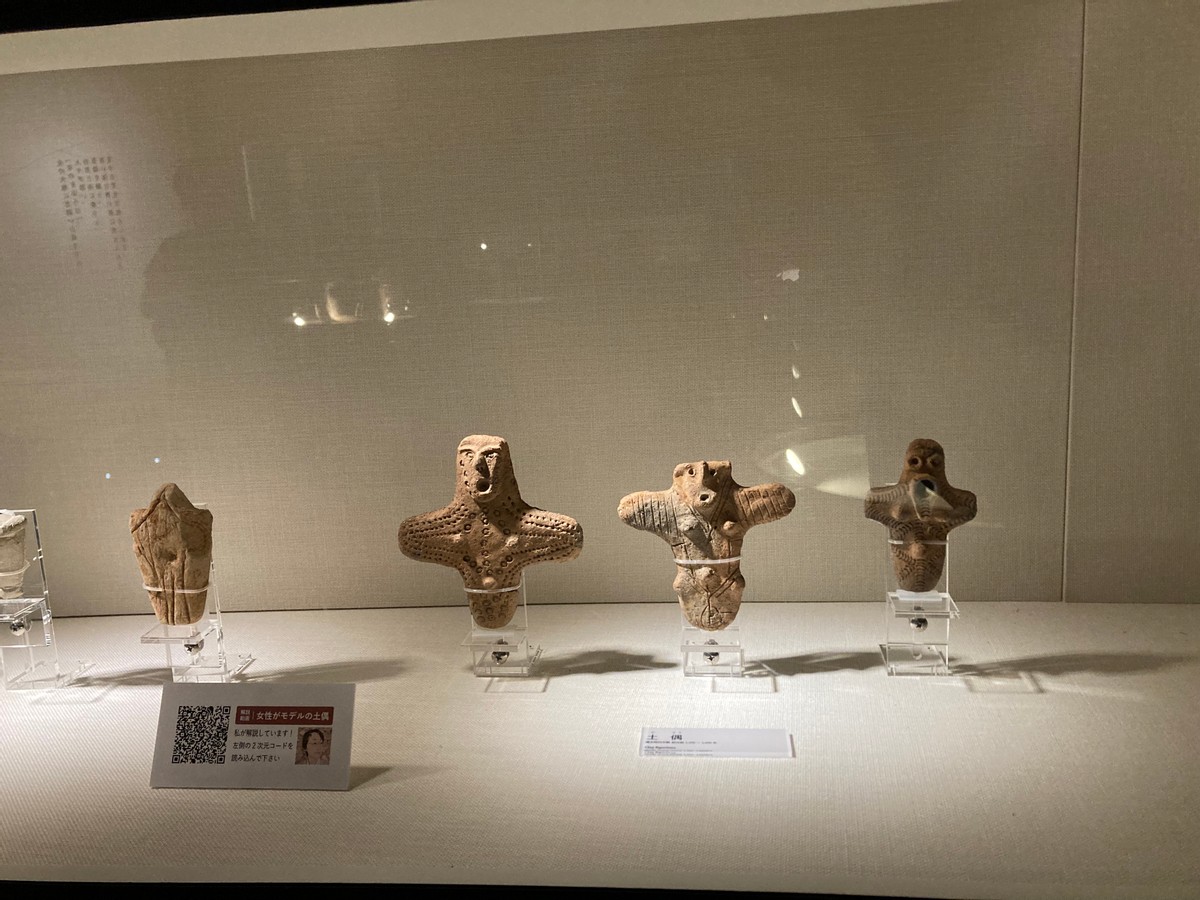
I wanted to post multiple pictures, so I decided to go premium for a trial.
As I wrote yesterday, during the Jomon period (about 5,000 years ago) the temperature was about 2 degrees higher than today. I only did a little googling, but that seemed to be global. The average temperature in Aomori is about 5 degrees lower than in Tokyo. So, perhaps Aomori at that time was about 3 degrees lower than Tokyo today. Therefore, it seems that the climate in Aomori during the Jomon period was not so difficult to live in.
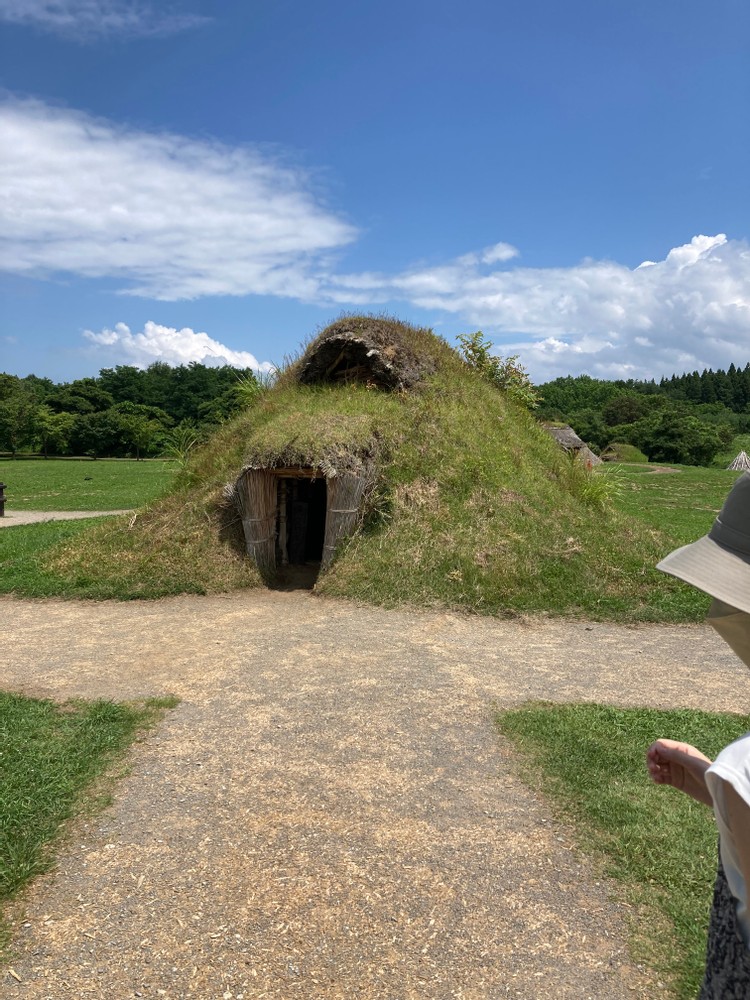
We entered a restored dwelling made of clay, which was quite cool. I guess it's warm in the winter on the contrary. The size of this dwelling is about 11m2. Roughly five people lived in one dwelling. The site was inhabited for about 1,700 years, from 5,900 to 4,200 years ago. At its most prosperous period, the village had about 500 people in 100 households. It reminded me of an island I once visited with a population of about 500 as well. When I traveled to the island, I realized that around 500 people was just the right size for people to live ethically. In fact, there were no weapons or human remains with signs of having been killed left in the site. The village was abandoned about 4200 years ago because of the climate change and colder weather.
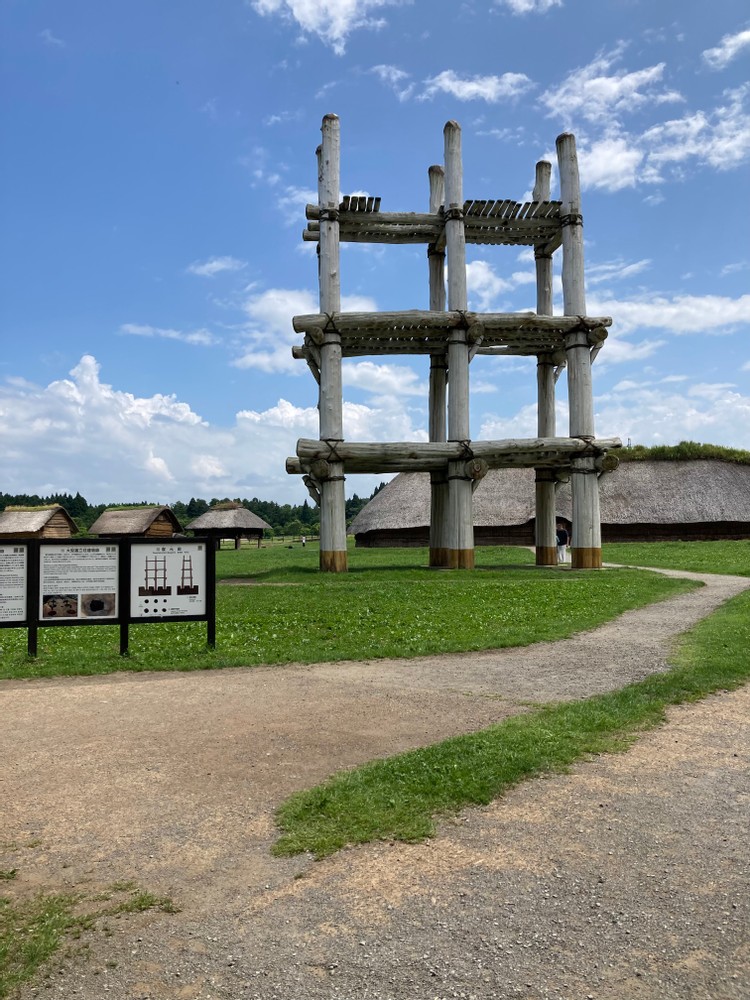
This is the restored tower. It was built in a place that is not the actual location. The actual excavated holes are preserved in the building as shown in the photo below.
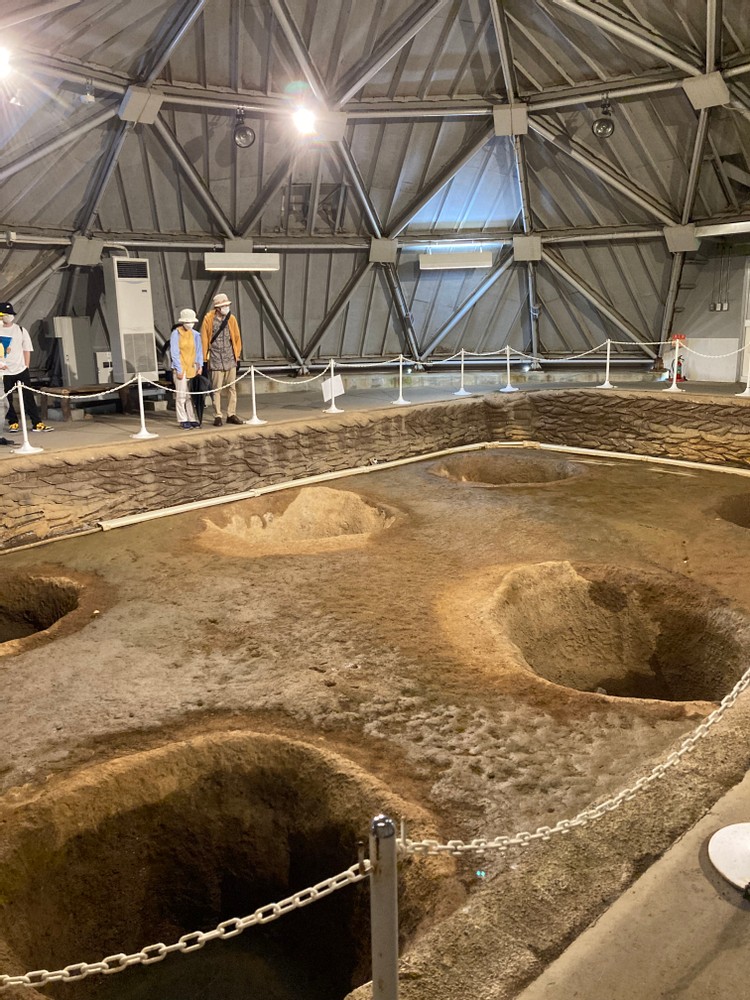
There are many theories as to what the tower was used for, such as that it was a lighthouse or that it was used for rituals. These huge wood poles is chestnut. Today, such huge chestnut trees do not grow in Aomori, but they used to grow in abundance in those days.

You can see the excavated artifacts in the museum attached to the site. Jade and obsidian were transported by waterways from Hokkaido, Nagano, Niigata, and other places.

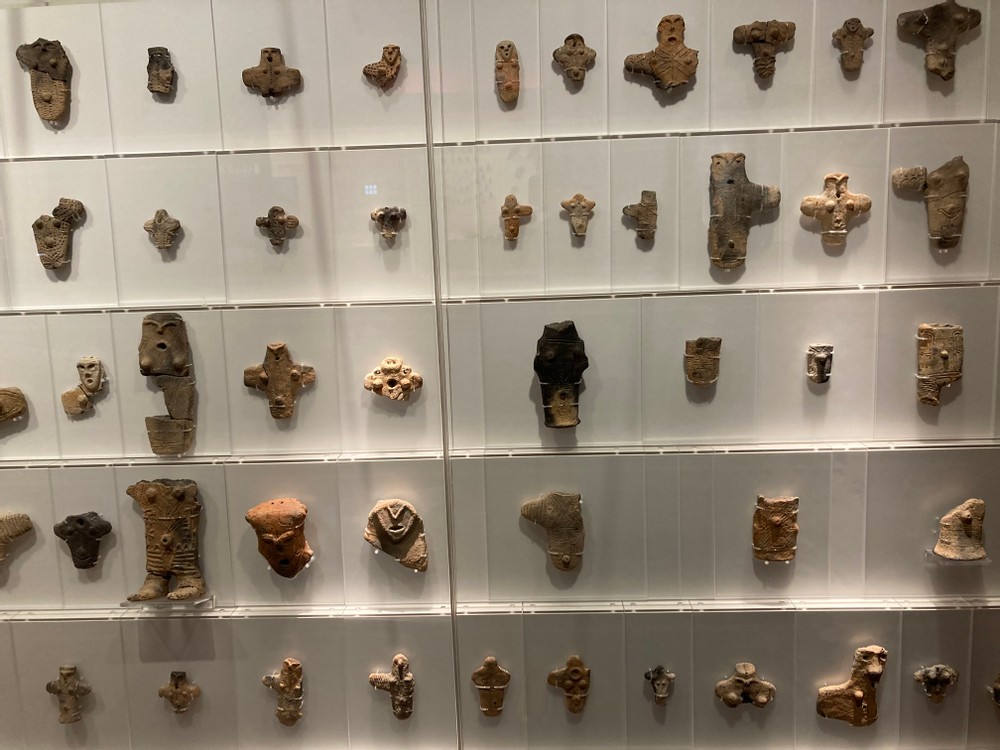
There were quite a lot of clay figures to see. These are said to represent women. Most of the clay figures are broken and were found in pieces at a distance. Only 1 in 4 babies had reached adulthood. The remains of the babies were placed in a broken pottery along with a single stone. It may represent the baby's soul.
When I was a student, we still knew very little about the Jomon period. So I was excited to learn a lot this time. From the perspective of the Jomon people, our lives must be like science fiction. But since we are the same human race, we should feel the same things.
Great pictures! Do you know what the round rock artifacts were used for?
Awesome pics and write-up!
@quite-unlike-tea - In the picture, it calls them "Large jade beads". From a random blogger online, I found a similar pic. They claimed, "The next several displays consisted of Jomon people’s jewelries and accessories that were excavated from the archaeological site.". The holes were presumably used for a string/rope, but I can't imagine that looks too comfortable to wear on a daily basis. Haha.
Yes, they look pretty big for everyday wear. Maybe they were ceremonial or only for special occasions?
That's so cool! I love history and these kind of rebuilt villages are just amazing.
We're you able to enter the small hut?
@quite-unlike-tea @HerrDouglas - "Large jade beads" are really large, they are approximately 2.5 to 3 inches in diameter. It is not yet clear what they were used for. My hypothesis, however, is that they are hut ornaments. I imagine the Jomon people hung them at the center of the ceiling of their hut.
@HaneNoSasayakigoe - Yes, we're able to enter the hut. There was also a larger meeting place, although I did not take pictures of it. In this picture the hut is overgrown with grass, but I imagine it probably had a nicer appearance. Because the Jomon people were so aesthetic that they fetched jade from far away.
@Akiko
I would imagine that the grass is helping with insulation. Or were other huts not overgrown with grass? So called "mud huts" are actually pretty nice. They keep cool in summer and warm in winter.
@HaneNoSasayakigoe - Oh, I didn't realize that was insulation. Indeed, I think you're right. At the time of excavation, it was not known what the huts were made of, so other huts were restored with different materials such as thatch. It is now a common theory that the huts were made of … soil? mud? clay? I don't know which word is appropriate.
@Akiko
Maybe, it was made with some kind of clay. I think this type of clay is used all over the world. But now not many people can work with it anymore, so it became really expensive to build with it.
Considering that all are materials that rot in soil or are just soil, it might be difficult to figure the materials out with 100% certainty.
@HaneNoSasayakigoe - I see, clay is fine and expensive, so it's different from just soil. Thanks!